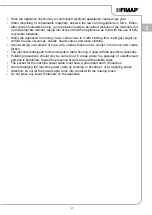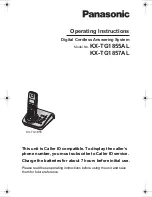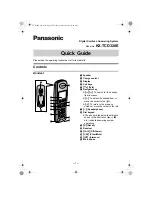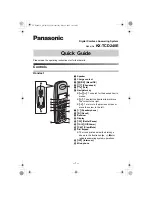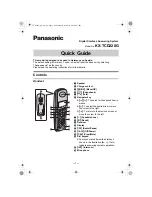
immediately if they become damaged.
•
The appliance must be stored only indoors or else under cover.
•
The appliance must not be used or kept outdoors, in damp conditions or directly exposed to
rain.
•
The appliance does not cause harmful vibrations.
ATTENTION
:
•
The appliance must be used only by authorized, trained personnel:
→ by those who have been trained to use it safely
→ by those who have been expressed authorized to do so
•
When using the appliance, watch out for other people, and especially children.
•
The operator should check that unauthorized persons do not use the appliance.
•
Before starting the appliance, make sure it is safe to operate.
•
After use, the operator should check whether the appliance has any visible damage or defects.
Any modifications that could compromise safety should be reported to technical support.
•
The operator or the owner must check that the appliance is always in an excellent technical
condition.
•
The safety devices should never be dismantled, modified or disabled for any reason.
•
The manager bears no responsibility for any transformation or arbitrary modification of the
appliance.
•
When using the appliance, be sure to ensure the safety of people and objects.
•
Do not bump against shelves or scaffolding, especially if there is a risk of objects falling.
•
Do not place any liquid containers on the appliance.
•
The appliance's operating temperature should be between 0 °C and +40°C.
•
The appliance's storage temperature should be between 0 °C and +40°C.
•
Humidity should be between 30% and 95%.
•
When using detergents for cleaning floors, follow the instructions and warnings on the bottles.
•
Before handling detergents for cleaning floors, use gloves and suitable protection.
•
Avoid using the brushes while the appliance is standing still, so as not to damage the floor.
•
In the event of fire, if possible use a dry powder extinguisher and not a water one.
•
Do not tamper with the appliance's safety devices for any reason whatsoever, dutifully follow
the instructions provided for routine maintenance.
•
Do not allow any objects to go into the apertures. If the apertures are blocked, do not use the
appliance.
•
Keep the appliance's apertures free from dust, lint, hairs and any other extraneous body that
could reduce the air flow.
•
Do not remove or change the plates on the appliance.
•
Be very careful when transferring the appliance in freezing temperatures. The water in the tank
or in the tubes could freeze and seriously damage the appliance.
•
Use only brushes and pad holders supplied with the appliance or those specified in the Operator
Manual. The use of other brushes or felts could compromise safety.
•
If the appliance malfunctions, check that this does not depend on a lack of maintenance.
Otherwise, request the intervention of authorized personnel or an Authorized service centre.
•
When replacing parts, ask for ORIGINAL spare parts from a Dealer or an authorised Retailer.
•
For reasons of safety and the smooth running of the appliance, have the scheduled maintenance
set out in the specific chapter of this Manual carried out by authorised personnel or by an
authorised Service.
•
Do not wash the appliance with jets of water or pressurised water or with corrosive substances.
16
EN
















